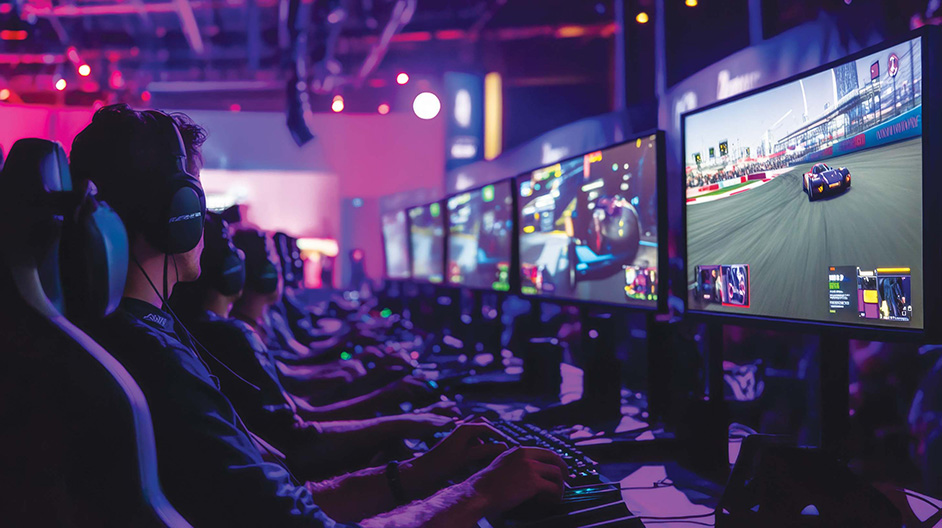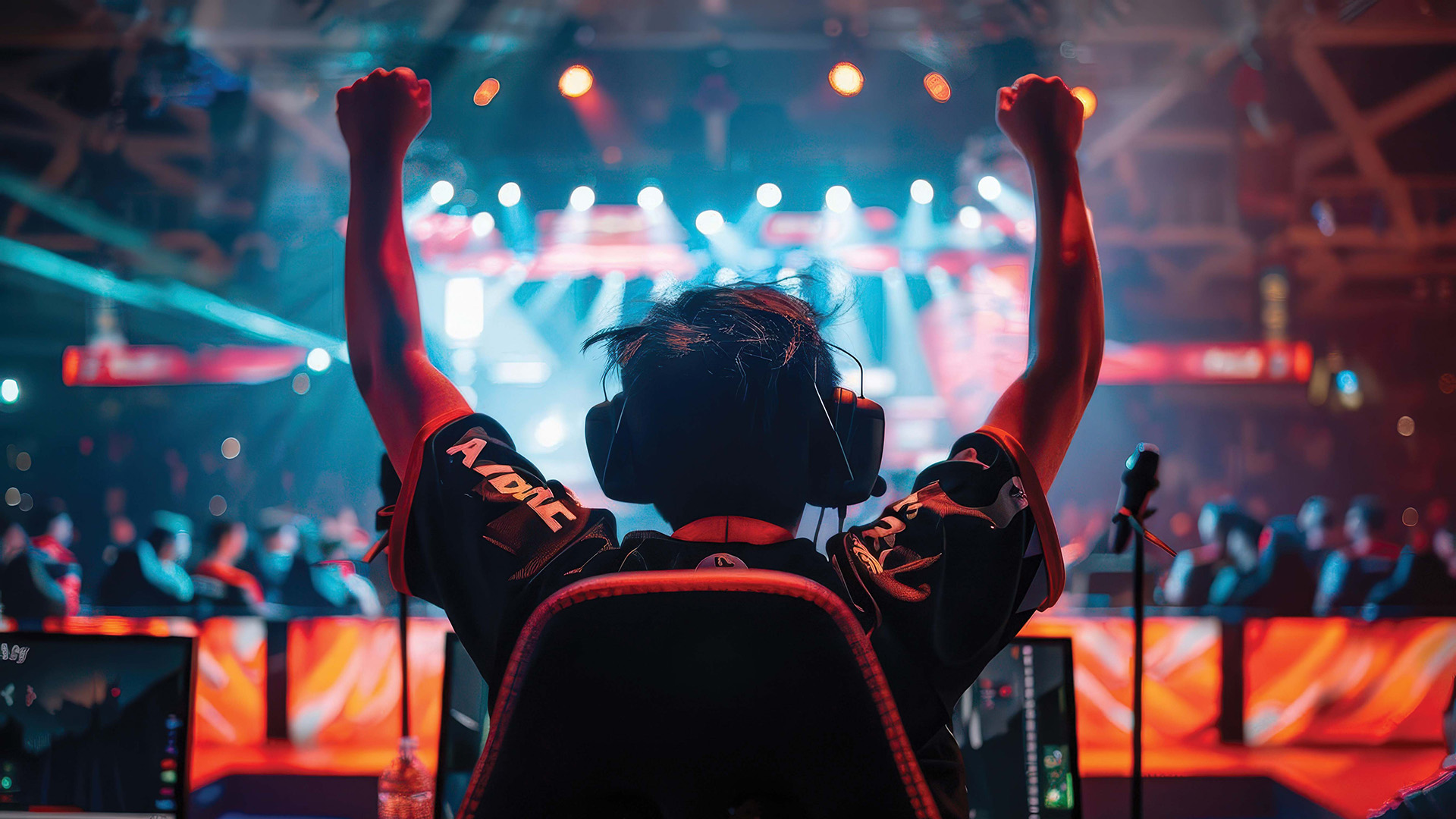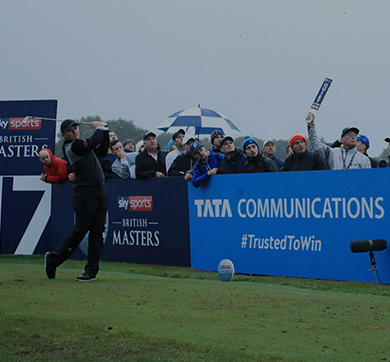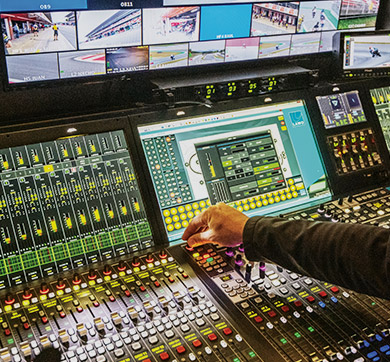April 2025 | 1639 words | 6-minute read
On August 18, 2024, with under 10min left on the clock and 88,000+ spectators watching, Norwegian striker Erling Haaland scored big, clinching the grand final win at the World Cup for his team.
Even if you were an avid football fan, you may be confused by that sentence. After all, Mr Haaland wasn’t playing the football World Cup for the Norwegian national team or in the Premier League for Manchester City. Instead, he was part of a team created by Portuguese pro, JAfonso, for the football video game franchise EA Sports FC while participating in the EA FC 2024 — a $1 mn tournament at the second Esports World Cup, a multi-genre esports competition held in Saudi Arabia.
JAfonso walked away with a cool $300,000 at the World Cup, where 500+ esports teams competed for 22 titles, with both ‘newbs’ and pros vying for glory in tournaments like the $3 mn PUBG Mobile World Cup or the $5 mn Dota 2. The total prize pool of $60 mn+ at the Esports World Cup showcased the high stakes — and the overwhelming global popularity — of gaming and esports, which has experienced exceptional growth in the last five years.

The rise of esports
Tata Communications was quick to spot and respond to the upswing in gaming and esports, building capabilities to enhance infrastructure, content creation and end user experience in the media and entertainment sector (M&E). In December last year, Amur Lakshminarayanan, Chief Executive Officer and Managing Director, Tata Communications, cited three significant opportunities in the M&E space — where the company’s portfolio has seen significant growth, from Rs 603 crore in FY23 to Rs 1,235 crore in FY24. These include enhancing partnerships with international sporting federations by adding value through its advanced production capabilities, supporting broadcasters transitioning to modern technologies and building products to address the needs arising out of the rapidly expanding gaming and esports markets.
Gaming and esports 101
- Esports is gaming (a broad term that encompasses playing any video game on any platform, primarily for fun or relaxation), but on a competitive level.
- Esports are considered ‘real’ sports, with the International Olympic Committee announcing the inaugural Olympic Esports Games will be held in Riyadh, Saudi Arabia, in 2027.
- Top esports by viewership and participation include League of Legends, Counter-Strike, Fortnite, Valorant, Call of Duty and Dota 2.
- Many of these iconic games organise their own championships as video game developers and publishers also become esports tournament organisers.
The size of the global esports market has doubled from $996 mn in 2020, to >$1866 mn in 2025 (as per a report by Statista), with the United States ($1,236 mn+) and China ($537 mn+) leading in market revenue, and India at No 11 with $139 mn+ (~Rs 1,100 crore). The global video game market itself has been worth billions for many years; in 2024, the revenue was estimated at almost $455 bn, and is projected to grow to $665.77 bn by 2030, according to a report by Fortune Business Insights.
“Esports and gaming have benefited directly from the growth and proliferation of digital platforms as a means of consumption,” says Dhaval Ponda, Vice President and Global Head, Media and Entertainment Business, Tata Communications. “Previously, one needed an expensive console, but the growth of mobile and cloud gaming has obviated the need for expensive hardware. Plus, the convergence of gaming and entertainment has led to a higher level of engagement and availability of gaming avenues.”
Stomping the ‘lag’
One of the sector’s biggest challenges is high latency or the dreaded ‘lag’ in gaming parlance. Think the freezing, stuttering or packet loss that one may have to contend with when playing fast-paced games. Companies invested in creating, producing and streaming games are therefore constantly seeking scalable digital infrastructure solutions, and Tata Communications is well positioned to step in. “We have to ensure low latency for a seamless user experience, scale effectively to support widespread adoption of casual games, and establish a stable, dependable revenue model for sustained growth in the sector,” says Mr Ponda, encapsulating the company’s mission.
The company’s previous investments in enabling a high-quality live broadcast experience — 80,000+ live events, with 5,000+ produced remotely — have put Tata Communications in a unique position to solve the latency problem. “Over the years, we have emerged as the technology partner of choice for the media and entertainment segment with a clear focus on live sports,” says Mr Ponda. These include strategic partnerships with leading sports federations like World Athletics.
Gamers, IRL
Not unexpectedly, the esports audience skews young, with most reports putting them in the 18 to 44 age group. They are also predominantly male (~70:30), though this can vary depending on the game and is a changing number as more women are drawn to the games.
Mr Ponda adds, “The target audience for this segment can be broken into three segments: the professional gaming community that drives a lot of viewership and gaming content popularity across all video platforms; the super fans who have very high levels of engagement across the full spectrum of play time, viewing, merchandising and cross-platform participation; and, finally, the casual gaming community that has also seen a rise due to the general availability of gaming content.”
“We have invested in a global video backbone, media native cloud, edge and application stack, and we support some of the biggest global sports federations, broadcasters and digital platforms with a total audience reach of over two billion,” says Mr Ponda. Tata Communications is the official broadcast connectivity provider for Formula 1, connectivity supplier for MotoGP and official broadcast distribution partner for Formula E, ensuring that there is no lag between what happens on the track and what fans see on screen.
The company’s low latency edge applications are particularly suited to the gaming industry where the focus is on the end user experience. Moreover, enterprises producing games increasingly require secure cloud connectivity to global data centres, reliable core networking to connect globally distributed developer studios, as well as a media distribution and remote production strategy. With its vast suite of digital media solutions, supported by edge and cloud applications that ensure data protection for players and businesses, Tata Communications is poised to address this need and build a next-generation media ecosystem.
OTW to help
The company is leveraging its broadcast experience in gaming as well, enabling game developers, publishers and marketing companies to access new geographies in its media network, optimised compute through its media edge, and integrated content delivery and security infrastructure. “And within esports, we offer esports service providers and system integrators support to create high production value esports tournaments, manage content on our digital media platform and distribute live content on digital or traditional channels to new audiences,” says Mr Ponda.
Tata Communications is also optimising existing infrastructure to offer solutions in the gaming and esports segment. For instance, its 100GB ‘backbone’, launched to meet growing bandwidth demands as well as smoothen the delivery of 4K viewing experiences, can help facilitate multiple cameras, cutaways, real-time reactions, commentary and intensive editing for esports organisers. Effectively managing live-streaming and providing interactive experiences is crucial for maximising fan engagement.
Easter eggs
Tata Communications is also developing new products and services for game development. “We are currently focusing on application stack, edge compute and artificial intelligence capabilities to support the development of non-player characters in gaming environments,” says Mr Ponda. “We are also focusing on various people of colour, with some of the biggest esports formats, to deliver esports championships in various countries at scale.”
The company has supported De Tune, a global media services company that works with some of the largest esports tournaments in the world, in its move to remote production and streaming. It deployed its media cloud infrastructure to simplify and enhance De Tune’s global production operations by consolidating multiple vendors into one cohesive media ecosystem and automating video workflow for online content delivery with low latency. This has made it possible to deliver content to all parties involved in production in a matter of seconds, with all editing and production done on the cloud, at an increased speed. “This agility in workflow meant that De Tune was able to keep up with changing demands in the sector; this agility will be needed for the coming years,” says Mr Ponda.
In 2023, Tata Communications further expanded its capabilities by acquiring The Switch, a live production and video transmission company, to help it deliver end-to-end video production and transmission of high-quality, high-speed, immersive live video experiences. A year later, it opened a 66,000sq ft live production centre called The Switch @ Victory in the US to support live content production and delivery, especially useful for major sports and esports leagues.
Snowballing gains for the future
Tata Communications predicts a global demand for better gaming experiences, including augmented reality and virtual reality. “Audiences across the board are ready to pay for more immersive experiences,” says Mr Ponda. “Secondly, there is a demand for different types of content that is currently unmet, both from a creative and technology standpoint. Finally, there is an explosive growth in massive multiplayer online role play gaming with mass participation, video sharing and content consumption.”
The company is determined to meet this demand and emerge as the technology partner of choice for the top players in the ecosystem, including esports organisers, streaming platforms, cloud gaming portals and game publishers. “At the same time, we are also laying the foundation for a technology platform to support global scale and consumption of gaming content,” says Mr Ponda. “We will differentiate ourselves through engineering and technical excellence, delivering cutting-edge solutions that enhance performance, scalability and user experience.”
—Anuradha Anupkumar

































